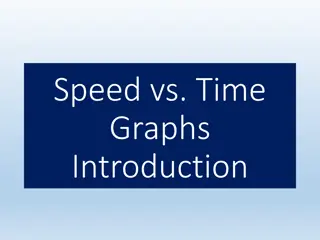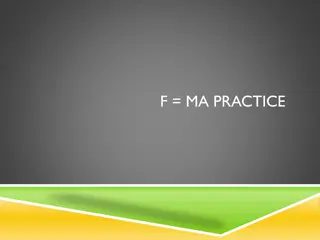Advances in Laser Plasma Acceleration and Strong Field QED Research
Exciting advancements in laser plasma acceleration using short wavelength drivers and strong field QED research are being made, with studies involving excimer lasers, electron beam pumping, and high-power amplifiers. Techniques like excimer multiplexing are explored for multi-stage laser wakefield acceleration. Additionally, scaling with wavelength and nonlinear Breit-Wheeler pair creation phenomena are investigated for potential applications in intense laser interactions. These cutting-edge developments pave the way for future breakthroughs in high-energy physics and related fields.
Download Presentation

Please find below an Image/Link to download the presentation.
The content on the website is provided AS IS for your information and personal use only. It may not be sold, licensed, or shared on other websites without obtaining consent from the author.If you encounter any issues during the download, it is possible that the publisher has removed the file from their server.
You are allowed to download the files provided on this website for personal or commercial use, subject to the condition that they are used lawfully. All files are the property of their respective owners.
The content on the website is provided AS IS for your information and personal use only. It may not be sold, licensed, or shared on other websites without obtaining consent from the author.
E N D
Presentation Transcript
Sponsored by NRL base program and DOE Short wavelength drivers of laser plasma acceleration and strong field QED D.F. Gordon, B. Hafizi, M. Wolford, Tz. Petrova Naval Research Laboratory D. Younis University of Rochester 7/23/2024
Excimer lasers as sources of ultra-short pulse deep UV Argon Fluoride Krypton Fluoride Wavelength = 248 nm Gain Bandwidth ~ 5 THz Shortest Pulse ~ 60 fs Thermal Conductivity ~ 9.5 mW/m*K Wavelength = 193 nm Gain Bandwidth ~ 10 THz Shortest Pulse ~ 30 fs Thermal Conductivity ~ 17.9 mW/m*K Highly simplified picture of excimer lasing: Ar Ar+ ArF* F F- 2
Electra Amplifier Dual 500 kV, 100 kA e-beams 5 Hz repetition rate 30 cm aperture 100 cm gain length Demonstrated lasing 750 J at 248 nm 200 J at 193 nm 4
PW burst mode in the deep UV ORESTES simulation Pumping continues for O(100) ns, and repumping time is ~2 ns. The technique of multiplexing allows this fact to be exploited to produce multiple pulses. Can we multiplex with PW pulses? 5
Excimer multiplexing as a path to many stage LWFA LONG PULSE AMPLIFIER (~ 100 nsec) Demultiplexer Array (mirrors) Last Pulse Technique developed for laser fusion efforts on NIKE laser. Multiplexer Array (beam splitters) Can this be applied to LWFA staging in the Electra bay? (6 beams have been multiplexed) FRONT END ( 5 nsec) Timing and spatial overlap accuracy needs to be examined. Target Only three pulses shown for clarity 6
Scaling with Wavelength Scale all parameters such that underlying physical equations are invariant Vlasov-Maxwell system is invariant under these transformations. If there is a known scenario, it can be scaled exactly to the extent that collisions/reactions are negligible. Example: reducing wavelength increases field for the same power and less energy. 7
Nonlinear Breit-Wheeler Pair Creation ??+ ?? ? ?+ SLAC E144 observed a case where n=5 (barely). In the limit of large n, process is characterized by ~ ? 8/3? For <<1 the rate is exponentially small For 10 PW laser and few GeV electrons expect >10-4 pairs per electron 8
SF-QED effects increase exponentially with decreasing wavelength Mainly a manifestation of larger fields at smaller wavelengths Assumes SF-QED has a small effect on the overall dynamics Ignores technological constraints 9
Laser-guided pairs as mediators of gamma generation ~ 1 eV P ~ 100 PW ~ 100 MeV P ~ 100 TW Prepare collision of laser pulse and gamma pulse in vacuum As the pulses cross nonlinear Breit-Wheeler pair creation ensues EP Pairs 0-5 GeV, 10 pC Pairs in self-guided equilibrium, X-rays constantly emitted, Laser constantly depleted Laser + pairs + x-rays residual 10
Conversion efficiency with various seed energies 100 MeV seed 1 GeV seed 11
Excimer laser scenario (with KrF wavelength) Laser parameters: a=600, 200 J, 0.25 um, 60 PW (pulse duration fictitious) Energy flow Pump depletion most obvious in axial field 12
Short wavelength drivers for laser acceleration For a desired particle momentum, less laser energy is needed Charge per bunch is reduced Density and current density is increased However, downstream, these can be reduced for a fixed spot size Repetition rate may be faster because Gas load on chamber is reduced Smaller plasma, faster plasma recovery Multiplexing: many shots per pumping cycle In terms of ion acceleration, critical density may be accessible in low density foams To account for the various constraints, PIC simulation is needed 13
Caveats Optical Damage Two photon absorption can be a major issue at 193 nm Fused silica has been found to degrade quickly Calcium fluoride is more resistant to 2-photon absorption However susceptible to x-ray damage Also limited aperture size Magnesium fluoride has been found to have poor performance at 193 nm Fluorine-doped fused silica may be a solution Testing is needed Timing and alignment Tendency toward smaller tolerances in the deep UV system Scaling down is not a requirement, but fixed scale requires significant study 14
Conclusions Excimer multiplexing may be useful for LWFA staging Possible low-cost risk-reduction measure on the way to EP collider SF-QED remains difficult to access experimentally Copious gamma production is a persistent characteristic Gammas can be used to create pairs, either by conventional means (Bethe-Heitler) or by a further SF-QED process Short wavelengths might access SF-QED with less laser power Energy advantage is even greater, but for bandwidth constraint High level parameters suggest PW facility is possible using an existing main amplifier Major issue is compressor design Supply of optics useful at 193 nm may be an issue 15
Vision for PW class ArF laser facility Nominal parameters: 5 Hz 10 J 33 fs 193 nm 17
Concept for ultra-short seed for ArF facility Sub 200 nm fourth harmonic is discussed, e.g., in P. Susnjar et al., Opt. Comm. 528, 129031 (2023) 18
Strong field quantum-electrodynamics Strong field QED is important if in the rest frame of an electron the Schwinger field is attained ES = Schwinger field = 1.3x1018 V/m Focused intensity to produce ES in lab frame is 2.3x1029 W/cm2 Strong field parameter Even 10 PW laser cannot come close, so we require energetic electrons to make up the difference 19
Nonlinear Compton Scattering / Quantum Synchrotron* In general, total emission probability depends on Typical frequency multiplication: Nonlinear enhancement (Thomson limit): Volkov State Rolls over due to radiation damping for With 10 PW laser expect 4-5 orders of enhancement, 10-100 MeV photon energy 20 * For details see S.V. Bulanov et al., Plasma Phys. Rep. 41, 1 (2015)
QED-PIC Method using turboWAVE dF12 dF11 F11 F12 dF22 F22 F21 dF21 Emit gammas, Spawn pairs using new interpolated fields Push and move particles using interpolated fields Work out currents through cell walls Use currents to update the fields The classical field is self-consistent on the large scale The classical field is treated as external on the QED scale 21
Quantum recoil provides inward force on pair plasma Strongly radiating particle (left) vs. non-radiating particle (right) 22
Historical pulsed excimer lasers. TW has been achieved. Just about all the work has been with KrF. Very little seems to have been done with ArF. 23
SF-QED references (small sample) W.H. Furry, Phys. Rev. 81, 1 (1951) Foundational analytical framework for SF-QED cross sections C. Bamber et al., Phys. Rev. D 60, 092004 (1999) Detailed account of SLAC experiment observing multi-photon Breit-Wheeler pair creation C.P. Ridgers et al., Phys. Rev. Lett. 108, 165006 (2012) Establishes the QED-PIC methodology A. Henderson et al., HEDP Phys. 12, 46-56 (2014) Few percent conversion using Texas Petawatt Laser K.V. Lezhnin et al., Phys. Plasmas 25, 123105 (2018) ELI Beamlines prediction of tens of percent conversion due to nonlinear Compton, based on QED- PIC, accounting for pre-plasma effects 24























